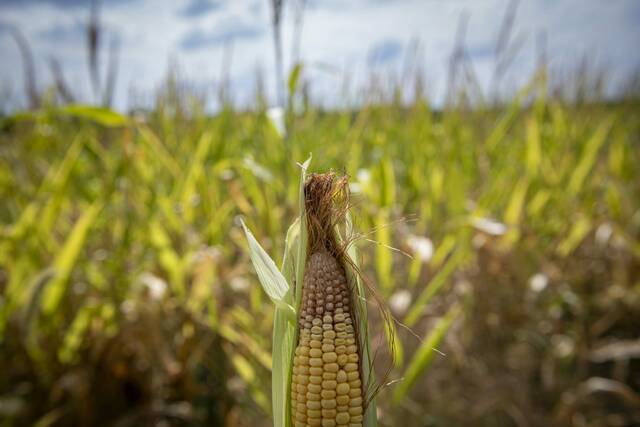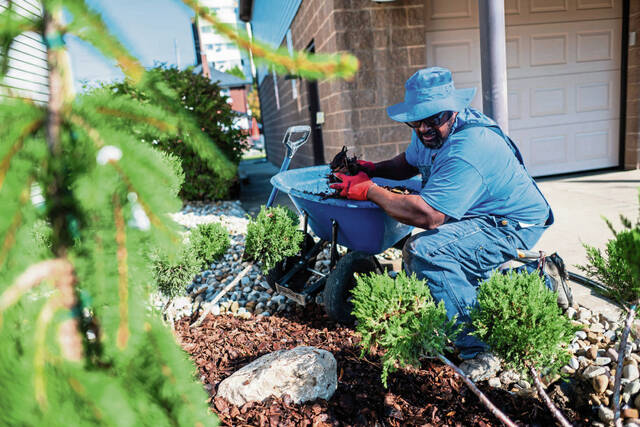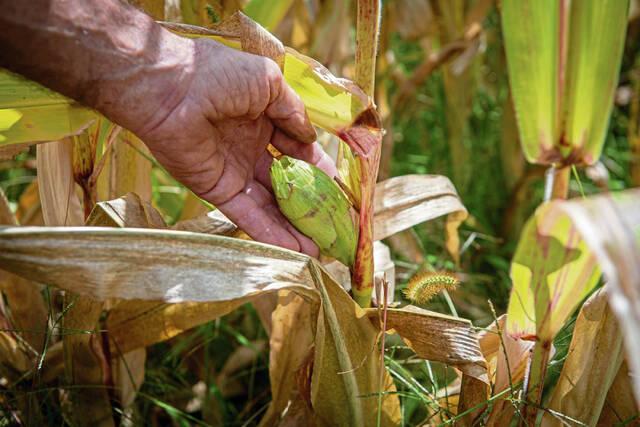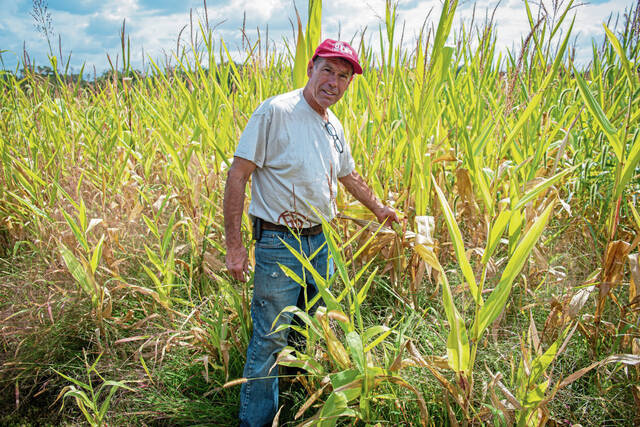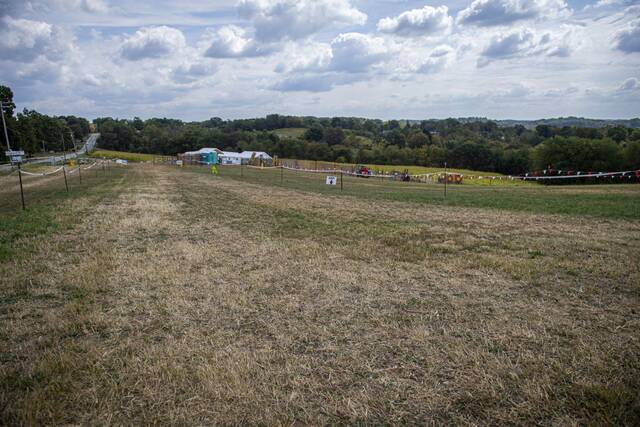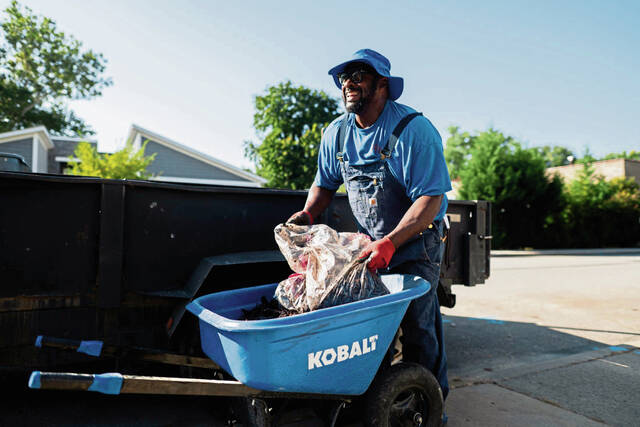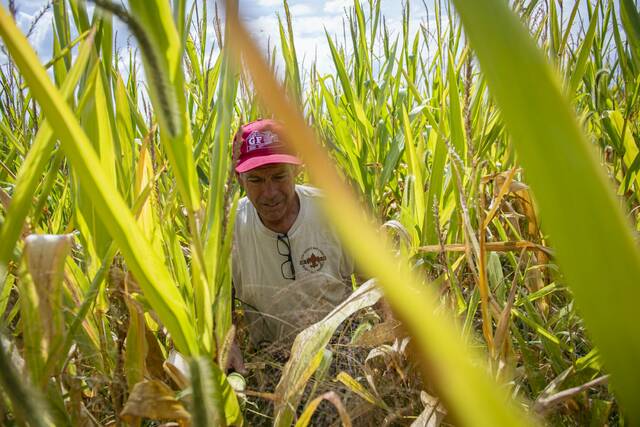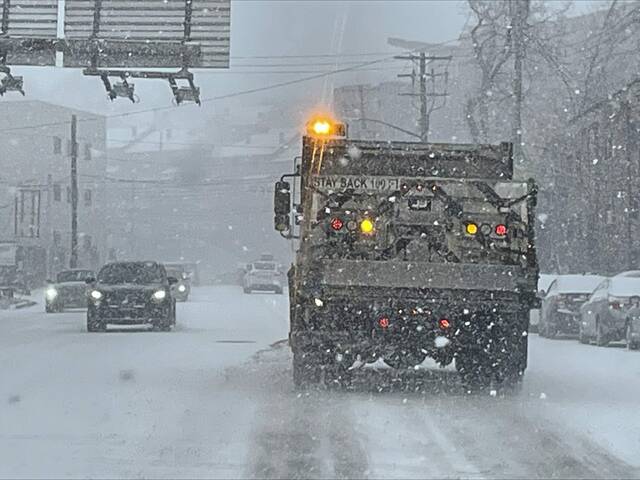Excessive rain in the spring followed by a hot, dry summer might be the weather pattern of the future.
Experts point to atmospheric greenhouse gases that are higher than they’ve been in more than a million years for driving temperature changes. The abundance of carbon dioxide, methane and other gases leads to warming, along with changes in atmospheric and ocean circulation that impact climate, said Mark Abbott, a professor of geology and environmental sciences at the University of Pittsburgh.
“I don’t know if this is representative of the region’s future climate, but we do know the overall pattern in the United States over the last century is warmer temperatures across the country with precipitation decreasing in the West and increasing in the East,” Abbott said.
According to the Environmental Protection Agency, unusually hot summer days are more common than in the past. The nights don’t cool off as much either, according to the agency.
National Weather Service data for July in Pittsburgh saw average overnight lows that were the seventh warmest on record, with 16 nights where the low temperature did not drop below 70 degrees.
AccuWeather senior meteorologist Chad Merrill said this year’s spring and summer weather pattern tracks with that of the past decade.
The 30-year average for rain in March, April and May is 10.3 inches, he said. In the past 10 years, the area has seen a wetter-than-usual spring with an average of 11 inches.
Likewise, high pressure ridges have ushered in overly hot and dry summer patterns beginning after the summer solstice in June.
This year, along with 2016 and 2024, was one of the warmest summers of the past decade, Merrill said.
He attributed less rain with the La Nina climate pattern, which the U.S. has had four times since 2015 — compared with two El Ninos, which bring increased rain and cooler temperatures.
Global warming can lead to irregular rainfall, according to a 2025 analysis by nonprofit news group Climate Central. Sometimes that means extreme rainfall and other times it can lead to drought conditions, the group’s website said. It creates inconsistent and unpredictable water cycles each summer.
Locally, rainfall was slightly above normal in May before a soggy June saw 5.57 inches of rain — 1.45 inches above normal, according to the National Weather Service in Moon.
By July, patterns reversed.
Rainfall measured 2.27 inches in July, nearly 2 inches below normal, National Weather Service meteorologist Mike Kennedy said. That trend continued in August, when the area got about 1.58 inches less than usual.
If this year is an indication, farmers and others who do business in the spring and summer months should brace themselves.
Erratic spring weather threw Buffalo Township farmer Gabriel Pawloski a curveball.
The owner of Gabriel’s Gardens said the deluge of rain at the beginning of the growing season caused a ripple effect all summer with corn, beets and other crops.
“It’s got me hoppin’ and steppin’,” Pawloski said from the Tarentum Farm Market where he sets up shop on Wednesdays. “It has me relying on some third-party growers more than I’d like to. But it works out because it helps them, too.”
Following a rainier-than-normal spring, the weather doubled down with a stretch of dry weather that has provided additional problems for farmers and landscapers alike.
Les Kemp, owner of Les’ Landscaping in Tarentum, said his crew should have been in prime grass-cutting mode during late August and early September, but it was almost at a standstill.
“It’s like July, what we’re having now,” Kemp said. “It’s kind of nice because we can catch up on some planting that we had planned to do later this fall, but we have to tell everyone to water their new shrubs and plants. We’re not getting any help from Mother Nature right now.”
You’d have to go back decades to find an August as dry as this year’s, according to weather service records.
In 2025, Pittsburgh tied 1894 and 1881 for the most days — 28 — with less than 0.01 inches of rain in August. It also tied 1976 for second most days, 27, with no measurable precipitation in August.
Kennedy said western portions of Allegheny County, such as Sewickley and Robinson, experienced severe drought conditions through mid-September, while towns to the east were considered abnormally dry.
Pennsylvania American Water on Friday issued a request for customers to voluntarily reduce water consumption in the wake of below-normal rainfall levels.
It applied to Butler, Connoquenessing, Saxonburg, Clinton, Donegal, Penn Township, Summit and others.
Farmer Seth Hepler of Myers Pickle Farm in Gilpin said the spring and summer seasons have been a roller coaster.
“Weather has impacted us, for sure,” Hepler said. “It’s been crazy. We have sweet corn that grows good and then goes bad in the same field.”
There’s no rhyme or reason to it, said Hepler, whose farm grows peppers, eggplants and more.
“Things just don’t mature right, even when you’re planting in the same field five days apart,” he said.
According to Penn State Extension, too much water can cause problems that include compacting soil, rotting seed and erosion. Heavy rainfall is a leading cause of of crop loss, especially in spring and early summer, according to the group.
Without water, however, plant cells can become damaged and fail to grow.
Murrysville farmer Herb Gearhard said he has learned to roll with the punches. His family has been farming cow feed — corn and hay — since 1769, making him an eighth-generation farmer.
“The weather has affected us tremendously this year,” Gearhard said.
June’s rain caused his corn seed to rot in the ground. A relentlessly hot stretch in July, when temperatures hovered in the 90s, caused the stalks to lack nitrogen, he said.
“Usually you like a dark green stalk, and ours are yellow,” Gearhard said. “Now we’re suffering from lack of rain to grow the ears.”
Average summer temperatures have climbed by 2.6 degrees since 1970 in 234 American cities, according to Climate Central.
Pittsburgh’s 2025 spring season is the eighth warmest on record, according to the National Weather Service. This summer, so far, is the ninth warmest on record.
Gearhard said his hay fields are unusually full of weeds.
“It will be what it is,” Gearhard said. “You can’t change it.”


